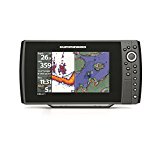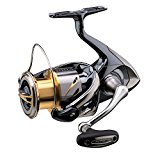Spotted Peacock Bass Winter Fishing Information and Facts
In the south, winter begins lasts the months of June, July and August.
From the perspective of the northern hemisphere, Winter is the rainy season. But as the seasons are flipped in the southern hemisphere, Summer is actually their rainy season and water levels rise significantly during this time of year, which has the effect of rapidly expanding the habitat of the Peacock Bass and as a consequence so much as that locating the Spotted Peacock Bass can be more than difficult.
As the water levels rise, lagoons and rivers blend together forming a large flood plain and this produces a much larger volume of water and getting snags is so much easier. Fishing expeditions during this time are often fruitless and with the colder weather, Spotted Peacock Bass are also much harder to entice.
The rainy season varies from region to region. The start and stop time of the rainy season is best gathered from tourism boards, fishing lodges and various guides for hier. One very important scheduling fact for European, Asian and North American visitors to South America is that the South America is in the southern Hemisphere and the season’s are reversed.
In the south, winter begins lasts the months of June, July and August while in the Northern Hemisphere, winter occurs in December, January and February.
Keep in mind before booking a fishing trip to South America. Located in the southern hemisphere, their seasons are reversed. When it is summer in the northern hemisphere, it is winter in the south. Also, the length and duration of the rainy season and commencement of the dry season are different from region to region. However, in most regions, that rainy season starts in February and lasts until March/April.
In all seasons, the Spotted Peacock Bass are more active shallow water during late morning and early afternoon when the sun is high in the sky. The sun essentially wakes them up and they are more active and hungry at this time. When fishing lagoons and rivers, use flashy diving, shallow running, surface plugs, jigs, large streamer flies and fly-rod poppers. When they strike, they strike hard. Blue chartreuse and green and white plugs work best. Lipless rattling crank baits are another favoured lure, especially in open water fishing. Blue and silver work best.
Surface lures include large walking, popping and buzzing models. For big fish, large plugs with for and aft propellers create a lot of commotion and best for catching large fish. Spinner baits produce some strikes but are greatly outfished by plugs. Unless you don’t have any other lures, leave these ones at home when it comes to peacock.


